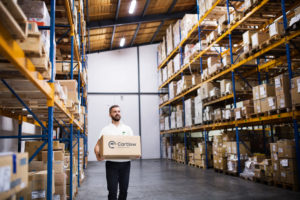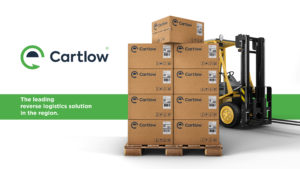Construction Business News, Jochebed Menon June 16, 2021
Mohammad Sleiman, Founder & CEO at Cartlow, writes how reverse logistics is vital to eCommerce and a successful circular economy model
When we talk about the ‘reverse logistics’ industry, it involves everything that happens after the sale of a product, including all activities related to their backward movement at any stage of the supply chain.
For many retailers and eCommerce platforms, reverse logistics is considered one of the biggest operational challenges due to the associated volume, cost and skills involved within the process.
It is important to note that there are various programmes that fall under the reverse logistics ecosystem which assist businesses in managing their overstock and returned items as well as help consumers with their unwanted and damaged items; these programmes include managing buyer returns, offering liquidation solutions, enabling buyback or trade-ins and warranty management.

Operational process
To be able to facilitate these services, an operational process involving sorting (product is processed), grading (product is assessed), refurbishing (product is renewed), repacking (product is repacked), returning to the vendor and recycling, are all required. The products that pass through the process are then resold through a B2B or B2C re-commerce channel to distributors, retailers, or consumers.
The reverse logistics ecosystem is considered an overarching bedrock of a thriving ‘circular economy’ and to enhance such a sustainable ecosystem, it needs to be well integrated into an inventory management system, logistics, after sales services and marketing for an overall smooth flow.
As the demand for products grows, many customers end up with unwanted or damaged items and the average return percentage for eCommerce players in the market continues to grow as a result, in addition, nowadays we are witnessing a huge demand from consumers looking for an easy or hassle-free return policy, where businesses will struggle to retain their customers if such conveniences are not provided. Moreover, through its wide variety of options, reverse logistics contributes to improved customer retention level, lower capital expenditure, reduced storage, and delivery costs.
Re-commerce
With re-commerce, businesses will be able to extend the overall product life cycle of the items they are selling which will contribute to improved return of investment while setting the foundations for a flourishing circular economy and improved environmental footprint, and these factors can be the defining line of a company’s success or failure.
Relatively, eCommerce is a rapidly growing industry and a continuous growth in this industry results in an increased volume of returns, overstock, and aged items. There are several factors which lead to the high return percentage rate of products, and these include consumers receiving a damaged item, a product that looks different than originally displayed, or even receiving the wrong product.
In addition, there are other key factors which contribute to overstock and aged stock, these include seasonality, product cycle and out of stock concerns by the seller; all of which lead to increased storage cost, cashflow freeze, and expiration of products stored on the shelves.
 Maximising product recovery
Maximising product recovery
This is mainly where reverse logistics comes in armed with an advanced API integration mechanism which addresses and resolves such challenges faced by businesses. Re-commerce solutions, such as the ones provided by Cartlow, help in maximising product recovery through various sales channels where returns will end up in the hands of satisfied customers instead of landfills.
For the time being, the ‘classified’ channel is considered the only channel for the sale of preowned items for consumers, and this is where re-commerce bridges this gap by providing more value propositions, which entails logistics, returns, and warranty to the used products.
Finally, reverse logistics is essential to a successful circular economy model because it contributes to businesses – distributors and retailers – on a larger scale by helping them get rid of their old and returned stock while managing their returns and insuring better retrieval rates.
As a solution, it also helps businesses optimise their conversion rate at new product launches by offering consumers trade-ins of their old products or devices, and consequently this cycle results in cutting costs and improving overall business operations.







